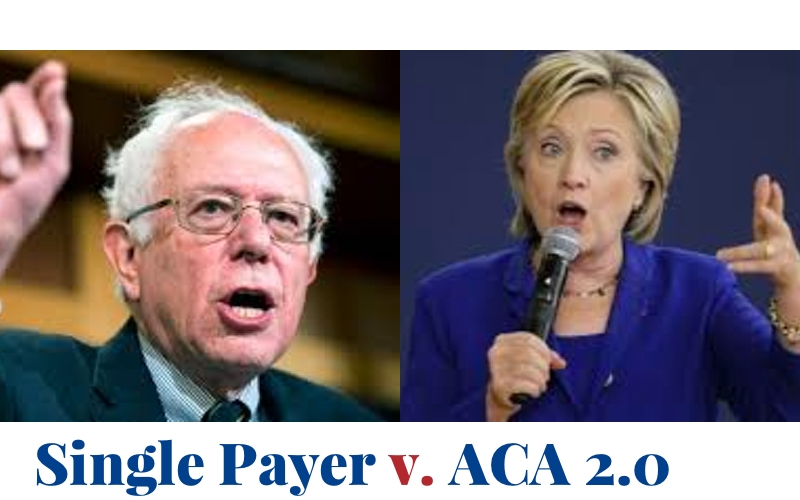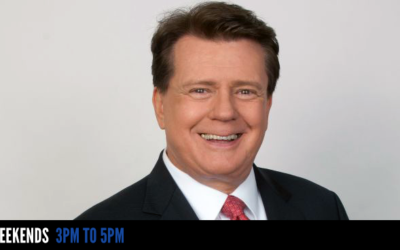As a health care provider, I have followed his year’s democratic presidential race with great interest. One major policy difference between Bernie Sanders and Hillary Clinton is that Bernie is pushing for a single payer model and Hillary wants to “build” on the Affordable Care Act that was passed under President Obama.
Here are a few of my thoughts on the subject.
A life in practice
I am now in my thirtieth year of practice as a Doctor of Chiropractic. During this time, I have maintained a private practice and have participated in the health insurance system as a provider for a multitude of plans. These include (among others) Aetna, Cigna, Blue Shield and Blue Cross, as well as Medicare: the federal government insurance plan for seniors.
I also worked part-time as a staff chiropractor at the Haight-Ashbury Free Medical Clinic from 1986-2001 as part of an integrative medical team treating the uninsured. And since 2005, I have worked at an Occupational Medical Center, again as part of an integrative team consisting of MD’s, Nurse Practitioners, Chiropractors, Physical Therapists, Medical Technicians and Acupuncturists, treating workers injured on the job.
These varied experiences in the private, public and semi-public settings have provided me with a broad perspective on the workings and failings of our health care system.
The world of private insurance
Most people who purchase health insurance know that their premiums have been rising each year at rates significantly above the rates of inflation. At the same time benefits have been cut; i.e., number of visits allowed, services covered, deductibles and co-payments raised, etc. But what people don’t know is that during this same period, reimbursements have been slashed to providers. In my case, many insurance payments have been cut by 50% or more over a ten-year period–sometimes to levels so low that it would be impossible to support a practice were all the payments at the same level. This is not exclusive to chiropractic. It is happening across the board in health care and many have left the professions due to the economic challenges.
Who drives health care policy?
In health care, as in most of our large economic systems, there is a hierarchy that ultimately determines the quality of our care. At the top of this hierarchy are the health insurance, pharmaceutical and medical device industries. Beneath this tier are the hospitals which procure and utilize the products generated at the top. At the next level are the medical doctors who administer the goods and services provided by those above them. Below the medical doctors are other professionally licensed providers—chiropractors, physical therapists, acupuncturists and naturopaths. At the lowest rung are non-licensed workers such as massage therapists, wellness coaches, yoga and pilates instructors, etc.
Power flows from top to bottom in this hierarchy. That power expresses itself by molding the system to maximize profits and concentrate wealth above. It accomplishes this via the political influence of lobbyists and political campaign contributors. This wealth is then distributed to those at the top (shareholders, CEO’s and other high level workers), often at the expense of the consumers of the care: namely, us.
Obamacare as the “solution”
The Affordable Care Act, or Obamacare, was offered as a solution to a problem: the millions of US citizens who had no health insurance at all. However, it was the top-rung players who had front row seats to mold the legislation. The result was the perpetuation of a degrading health insurance system subsidized by the federal government. Today, low income people are being subsidized with our tax dollars to purchase low-quality private plans.
Hillary’s incrementalism vs. Bernie’s revolution
Bernie, with his general assault on the moneyed interests that control most of the social systems impacting our lives, has exposed the pharmaceutical and heath insurance industries for what they are: the primary reasons why America spends more money per individual on health care than in any other industrialized country, yet still has millions of people under-or uninsured.
Hillary advocates building on the “successes” of Obamacare. But that system is inherently flawed. Huge amounts of money are funneled into the political system by the medical-industrial complex. Its interest is to maintain control of the supply and delivery of health goods and services which means keeping the system going as it has been going. Hillary’s “incrementalism” would keep us on this same path, indebted to the same interests, deluding ourselves that repeating our mistakes will eventually result in a positive outcome.
Bernie argues that the first step toward resolving this crisis is to provide a “public option.” This would allow people to buy into the Medicare system and receive the same benefits as those who are automatically given access when they reach 63 years of age or become disabled.
The single payer model provides many benefits:
–Streamline administrative expenses by concentrating the population into one system.
–Increased negotiating power and reduction of pharmaceutical and med device costs.
–Large scale collection of health data is easier.
–More oversight and control of benefits and reimbursements.
–The model emulates a successful non-private, governmental system like social security and unemployment insurance.
Transition to a single payer model is terrifying to the health insurance industry as it represents a gigantic market share loss. Allowing a public option would shift millions of customers and dollars out of the private insurance system.
A health care revolution
So Bernie is right. And the good news is that Hillary is suggesting a limited “public option” for those over 50 years old. She is evidently hearing Bernie’s message, and recognizing the inexorable direction of the future.
No matter who wins in November, it is time for a health care revolution. This is not a socialist fantasy, but a sound strategy rooted in good economics and fair politics for the benefit of the citizens of this country. And it is supported by many health care providers. Let’s not pretend that it is impossible to do this, or that it will cost trillions of dollars of taxpayer money. Let’s speak the truth: Such a revolution is impossible only so long as deeply entrenched powers continue to control our elected officials, and manipulate a corporate media that amplifies the propaganda of impossibility.
There is no denying the political challenges involved in reshaping our health care system. But we must reject the “accepted wisdom” that a transition from private health insurance to a single payer, government administered program is unrealistic wishful thinking.
Dr. Ricky Fishman has been a San Francisco based chiropractor since 1986. In addition to the treatment of back pain and other musculoskeletal injuries, he works as a consultant in the field of health and wellness with companies dedicated to re-visioning health care for the 21st century.
Copyright 2016 Ricky Fishman
ricky@rickyfishman.com www.rickyfishman.com













You have ignored Trump is your discussion!
Thanks for commenting Michael. I was not even aware that Trump had a position. What is it??